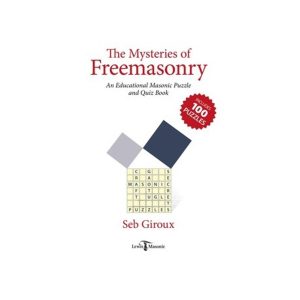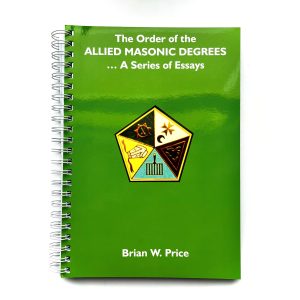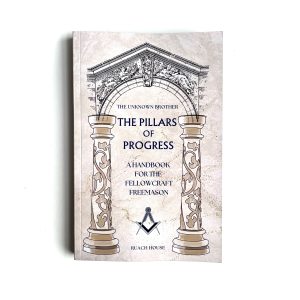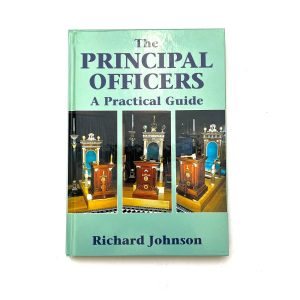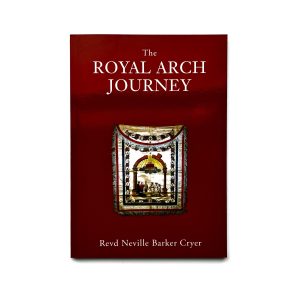The Mysteries of Masonry
An Educational Masonic Puzzle and Quiz Book. Did the Freemasons build Washington D.C? Do candidates drink blood from a skull during their initiation? And what happens with that goat? Find out the truth about the Freemasons and uncover their secrets through 100 puzzles, games and quizzes. The puzzles and tests are accessible to anyone, whether a Freemason or not. Before you start though, I must ask of you: Are you worthy?
The New Mason’s Friend
The New Mason’s Friend provides Brethren in early stages of Masonic life with a friendly induction and for the more experienced, the lifelong companionship of a useful source of reference. Written in everyday conversational English, the words are brought to life with over 100 images, illustrations and Ritual memorisation aids. Split into six sections specifically crafted for ‘pick me up, put me down’ reading sessions: Part 1 25 Questions about Freemasonry Helping to lay solid foundations Part 2 Fast History Timeline A birds eye view, flying over 50 key events Part 3 Ceremony of Initiation Explored Making sense of our Ceremony Part 4 Medieval Apprentices and their Masters Connecting with our Operative past Part 5 First Degree Glossary Cutting through all the archaic language Part 6 Mastering Masonic Ritual Easy to follow, Ritual memorisation system
The Order Of Allied Masonic Degrees – A Series Of Essays
The Origins and History of the Order of Free Gardeners
Freemasonry only had one serious competitor and that was from Free Gardenery. Both came from the same roots, the former from the trade of stonemasonry and the latter, that of gardening. It was anticipated that membership of Lodges would be drawn from men working in those trades. But from the outset Free Gardeners initiated men who were not gardeners and this was specifically catered for in their first written rules of the order. What attracted these gentlemen gardeners to seeks admission to a Lodge is not clear but perhaps the elaborate rituals, regalia and practical advice cannot be ruled out. The parallels between Free Gardenery and Freemasonry were remarkably similarity to Freemasonry in that both were created by operative Scottish gardeners and stonemasons respectively. A comparison between the two orders, their origins and development provides an unusual dimension for the study of both. This book provides the reader and fantastic introduction to the fraternity of Free Gardeners outlining its history, showing its regalia and describing its degrees. 152 Pages, ISBN 978 0 85318 656 4 Highly Illustrated Hardback
The Pillars of Progress
A Handbook for the Fellow Craft Freemason. This handbook is designed to be a useful guide and reflective tool to help you deepen your understanding of the Fellow Craft Degree, the symbols and teachings are so essential to your masonic journey. It aims to complement the oral instruction you receive, providing further explanation, prompts for reflection and resources for ongoing learning.
The Principal Officers: A Practical Guide
Examines the three most important officers in each Lodge: the Master, the immediate Past Master and the Warden. As the standard progression will be through the three chairs, the book will be interesting reading for those reaching that threshold, as well as giving them an insight into the coming years.
The Red Triangle: A History of Anti-Masonry
The Regius Poem – Bilingual Edition in Modern and Middle English
Freemasons throughout the world are finally able to study a six-hundred-year-old manuscript of The Old Charges thanks to an unprecedented translation in modern English that has preserved the original rhyme scheme . For these Brothers, it may provide new and meaningful insight into the history of the Craft from a medieval perspective, which is more about the actual do s and donts for ancient stonemasons than tod ay s Brotherhood and its symbolism. Nonetheless, it offers a lot of recognition when it comes to the origin of modern Masonic practices. Ever since James Halliwell (1820 1899) discovered The Regius Poem in 1842, English-speaking Masons have had to make considerable effort to cope with its language, which dates back to approximately 1425. Until now, the manuscript could only be read in its original wording, in modern prose or in attempts that failed to qualify as poetry. This implies that, in actual practice, the earliest document of The Old Charges has mostly been appreciated for its wisdom and strength - at the expense of its beauty. To reinstall this trinity, Brother Harry G. de Vries has translated the old text from rhymed Middle English to rhymed Modern English for the first time. It was his aim, he says, to facilitate his English-speaking brothers with a version in which the essential literary ingredient of rhyme would be revived in order to rekindle the poem's 600-years-old beauty. As a result, it helps bring today's Masons much closer to the impact the poem would have had on its medieval audiences. In the foreword, the Dutch author explains why being a native speaker of Dutch may have been a considerable help to understand and translate the language of The Regius Poem. You can check the results of his labour in this edition, in which each left-hand page has the original text and each right-hand page displays the modern translation. Brother Harry takes you back to a medieval lodge where a travelling word artist served masons the history of their craft as it was seen at the time - after the day's work had ended. At Lewis Masonic we are sure that this unique version in rhymed modern English will provide Freemasons with a new perspective on the beauty of their Craft. Limited Edition of 500 only Printed on Artisanal Textured Italian Paper Cloth Bound Beautiful End Papers 152 pages 168 x 240
The Rite of Seven Degrees
This book examines the deeply esoteric eighteenth-century Rite of Seven Degrees. This Masonic Rite was practised in London but led by French engraver and ex-soldier Pierre Lambert de Lintot. This work not only presents the story of de Lintot and his Rite, but for the first time displays the rituals and the order’s minute book fully translated from the late eighteenth century French into English, which not only reveals the workings of the lost Rite but adds to our historical understanding of the development of high degree rituals in a wider context. Highlights: Discover a system that evolved during a short period of Masonic experimentation that witnessed four Grand Lodges operating in England Explore the mysterious engravings of de Lintot, which acts as a window into his Masonic world and shows how Masonic rituals in higher orders that are still practiced today were interpreted at the time. Learn more about key Masonic figures of the time such as Cagliostro, Ruspini and William Preston, who also feature in previous books in the Lost Rites series; Rediscovered Rituals of English Freemasonry & Lost Rites and Rituals of Freemasonry. Discover the other colourful characters in the circle of de Lintot who shed light on Freemasonry's place in the vibrant London scene that entwined Masonic themes and new ideas during the Age of Enlightenment. Delve into the relationship of the Rite of Seven Degrees with other seven degree orders such as the Rite of Clermont and the Baldwyn Rite, which is still practiced today in Bristol.
